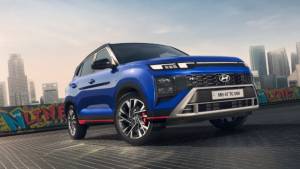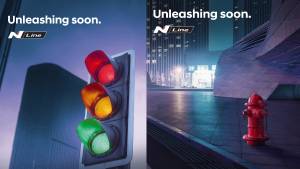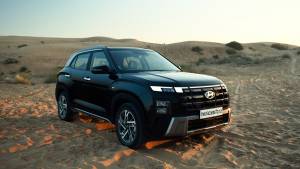Hyundai Verna first drive, review - taking the fight back to the SUVs
What would you buy, a sedan or an SUV? Over the last few years, consumer demand has strongly drifted in favour of SUVs. In the last couple of years, we've seen less than a handful of sedans in the mass market, with more in the premium segments targeting smaller numbers. So, Hyundai taking the leap into the sedan segment with the all-new Verna is a big gamble. Will the stake payoff, will depend on the virtues of the product itself? Is it good enough to draw the attention of a potential SUV buyer, big ask? Let's take a quick dive into the Verna and see if it has what it would take to influence the market and became a game changer.
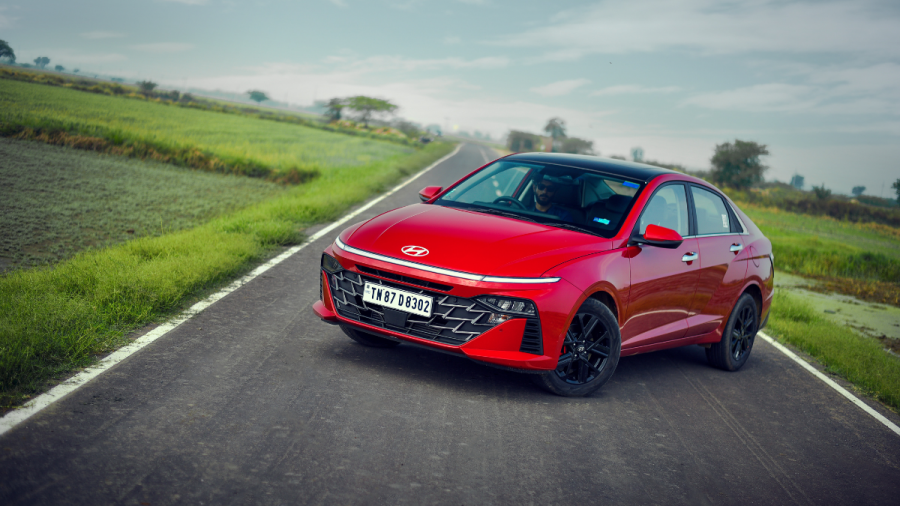
This is the 6th generation sedan, it started life as the Accent and eventually grew into the Verna. Hyundai is offering the new-gen Verna in two basic options, one powered by a naturally aspirated 1.5-litre petrol engine and the newer 1.5-litre turbocharged petrol. Within this is manual, and automatic transmission options, and then there are trim-based options as well. Hyundai has taken the diesel engine option out of the mix entirely. This is because meeting the emission requirements with diesel is getting to be a more expensive proposition for the maker and consumers, and there are more stringent regulations being laid down by various state governments restricting the use of diesel cars. The Verna then has a tough task ahead of it. So how is Hyundai tackling the challenge?
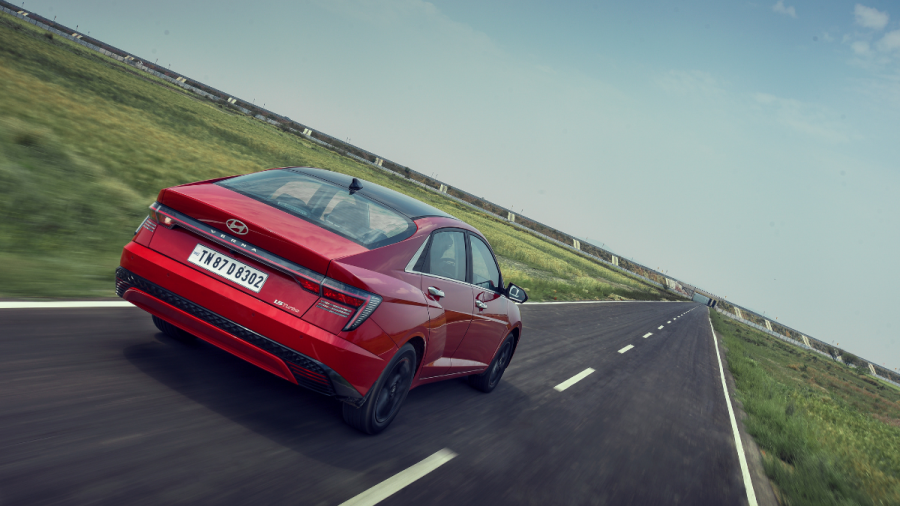
STYLING
The long ahead starts with the design. The Verna has strong and unique styling elements, based on Hyundai's new parametric design language. The broad LED strip running across the peak of the hood, the grille, the headlamps and the side air intakes are all attention-grabbing giving the front end a very distinct appearance. The one question everyone had was if the illumination from the headlamps would be adequate, but these are LEDs and should be adequately bright. Positioned below the hood line, I'm not sure if it will have a longer spread, but I will have to reserve an opinion on this for when we can drive the post-sundown.
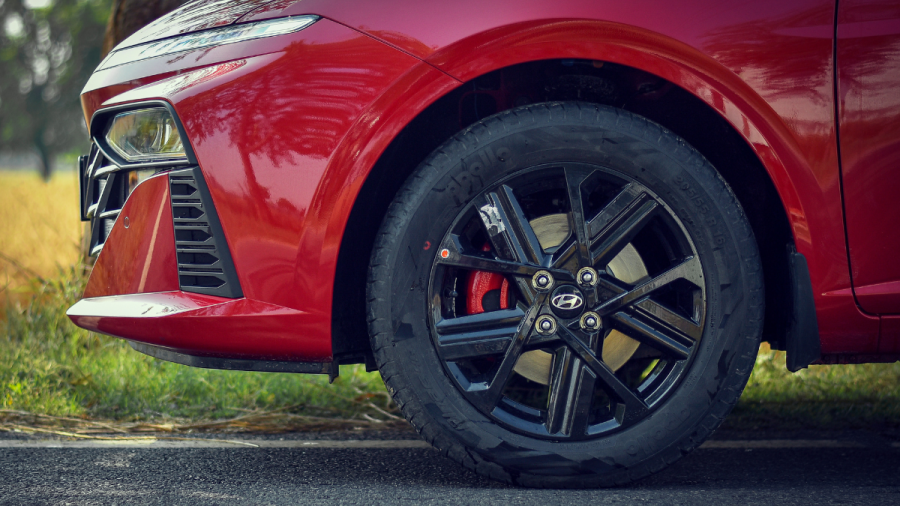
The side profile is one of this sedan's stronger suits. It does look impressive with a distinct waistline and sharp creases giving it a strong muscular visual. The 16" alloys and tyres fill the wheel wells adequately enhancing the Verna's appeal. I especially like the rear three-quarter styling which has this very muscular flank that protrudes out over the rear wheels. It adds an immense amount of volume to the rear of the Verna and this is more evident when you look at the Verna from the rear. The tail end is where the hottest action is. This has to be the smartest-looking rear end on any in this segment and even those above. The width of the new Verna is largely evident here with the flared-out rear fender making this sedan look larger than it actually is. The rear Led strip connecting the two tail lamps further accentuates the width of the . It's a very European look and feels, and I do like the overall treatment.
Its length and width along with the wheelbase have increased considerably. At 4,535mm it is 95mm longer than the outgoing sedan, with a 36mm increase in width and a 70mm increase in wheelbase adding more volume within the cabin. I'd wager that the Verna is easily the most spacious sedan in this category, larger than the Virtus, the Slavia or the Ciaz.
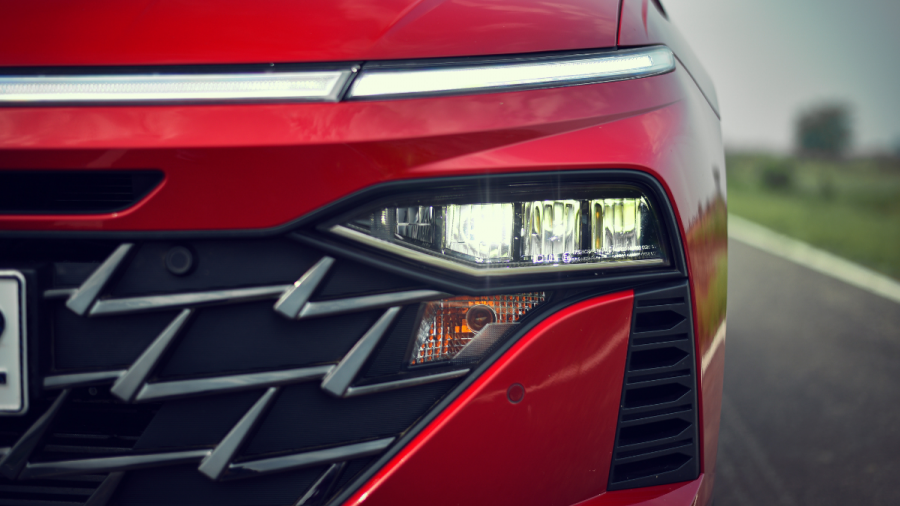
Overall the new Verna is a handsome sedan, but I do have one . The design of the front end and that of the rear look like they came from different lines of thought. The front end has a certain elegance, the rear is hardcore muscle. There is a stark difference between the two ends, and Hyundai could have probably worked on making this a homogenous design.
INTERIORS
Next up is the cabin. Not a very attractive place to be in, but it does have some strong points. The overarching styling is fairly simple and is dominated by the single-unit panel housing two screens, one for the infotainment and the second for the instrument cluster. It's an interesting contemporary design element but could have been executed in a more stylish manner. Perhaps larger screens with smaller bezels (the space between the screen and the edges of the panel) would have given it a more premium look. Another interesting addition is the switchable type control panel for the air-conditioning which can also be used as the infotainment controller. Gimmicky but a smart touch that retains analogue knob controllers rather than being entirely digital.
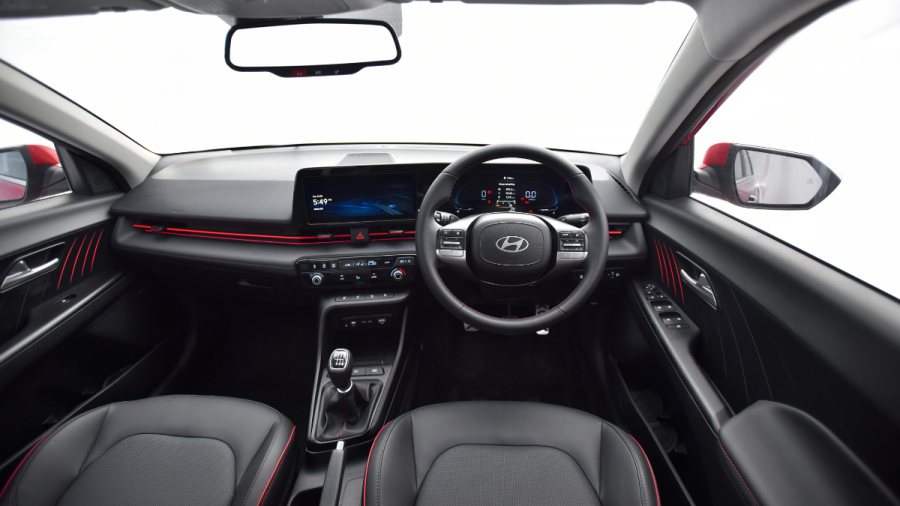
The most noticeable element is the very unique two-spoke steering wheel. It's a fantastic touch, but a bit confusing. This has to do with the Hyundai logo which viewed upside down looks almost the same as the right side up. Chances are high that you might not notice it's turned around a full 180 degrees.
Space is managed very well inside this cabin. The seats are supportive at the front and the rear bench is spacious with generous knee and headroom. A comparison between all the cars in this segment, SUV or sedan, might clearly show the interior space in the Verna as class-leading.
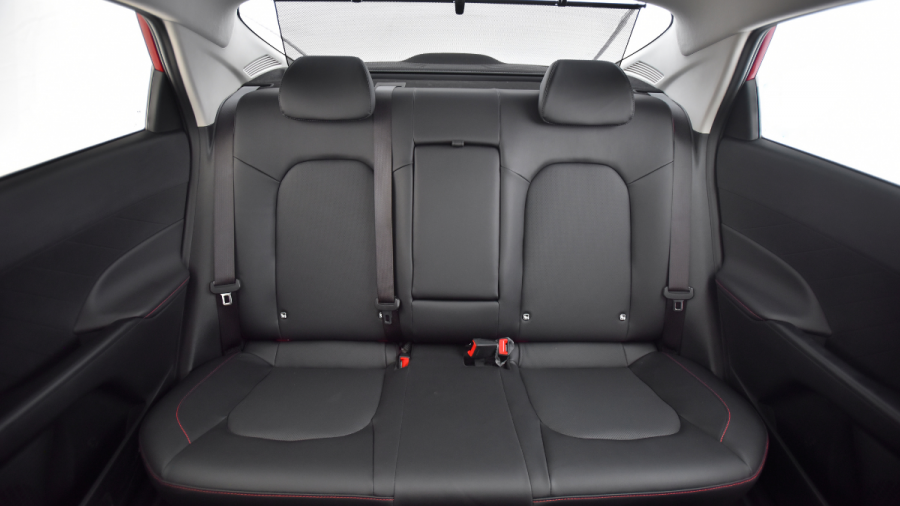
In the 1.5 turbo petrol variant you get exclusive visual differentiators like the red accents on the dashboard and red piping on the seats in addition to the red callipers on the front wheels and the blacked-out alloys. Safe to say they may not have an N Line variant on this sedan since there isn't anything more to offer unless Hyundai slaps on an exhaust job.
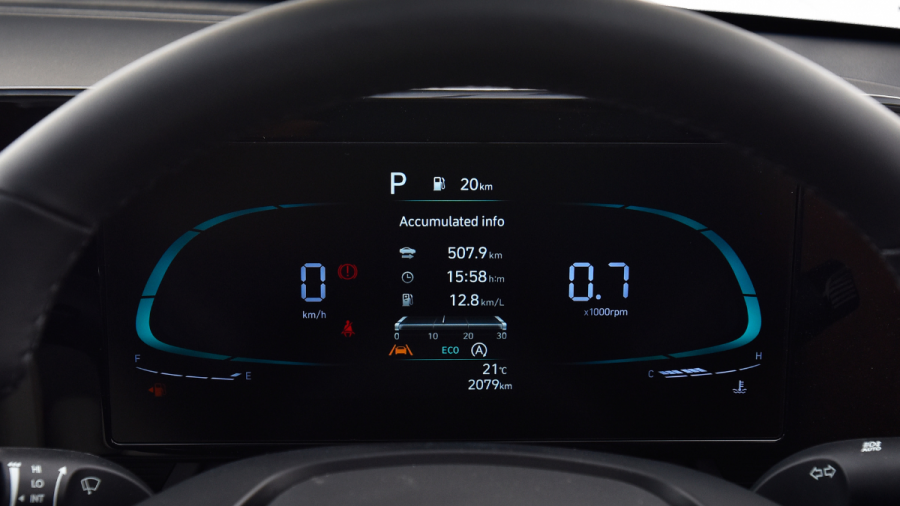
POWERTRAINS
I largely drove the IVT or the Intelligent Variable Transmission which I believe is going to be the one most of you would be interested in. I did drive the turbo petrol as well, but 10PS more than what the Volkswagen Virtus offers isn't really making me cream my so I will come back t it later.
The IVT is an advanced form of the CVT transmission without the inherent disadvantages and a lot more benefits. It comes mated to the 1.5 naturally aspirated petrol motor and it's silky smooth in its operation. Below 3000rpm the IVT feels just like any other automatic, quick to shift and smooth. You can barely hear it at work, and even if revved harder, there is none of the traditional whine these kinds of transmissions are associated with. The shift steps are also managed very efficiently, so you do get good performance in terms of acceleration, but more than the performance it's the comfort that makes this option a no-brainer. The other big advantage is fuel efficiency, and would you believe it if I said, Hyundai is claiming the IVT has an overall efficiency of 19.6kmpl, which is just 1kmpl less than the 7-speed DCT on the turbo petrol?
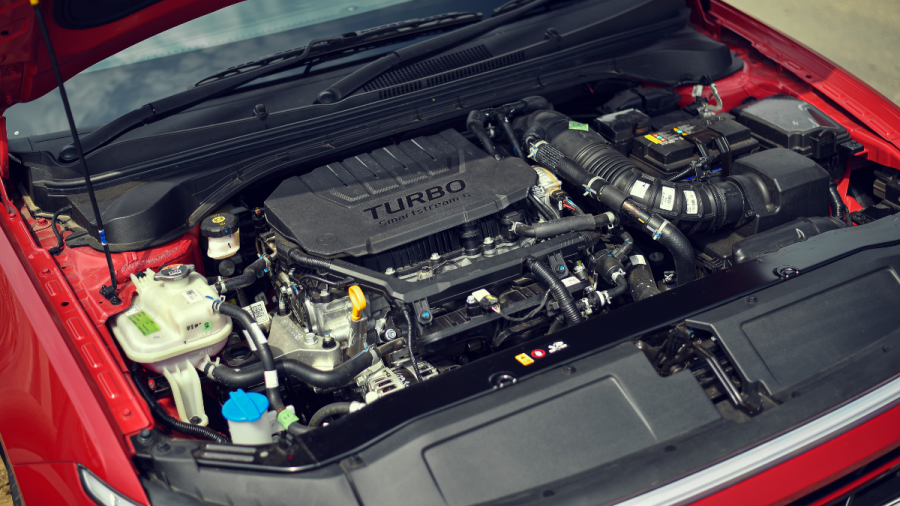
The 1.5-litre naturally aspirated petrol engine delivers 115PS of peak power with 143.8Nm of torque which is more than adequate for most driving conditions, be it urban or highway driving cycles. It's a smooth and tried and tested motor that has served well in several other Hyundai models, and this would be the preferred choice.
On the other hand, the 1.5-litre turbo petrol is a class act, pushing out 160PS at 5500pm with 253Nm of peak torque available from 1,500-3,500rpm. Matched with the 7-speed DCT this makes it a very interesting to drive though without any additional work in the dynamics department all you have for now is a that does very quick straight line speeds. The 1.5-turbo will hit the ton in a claimed 8.1 seconds and go onto a top speed of over 200kmph. The latter is quite frankly unattainable in this country unless you like paying hefty fines. But the acceleration from a standstill is easily comparable to any electric in a similar price bracket.
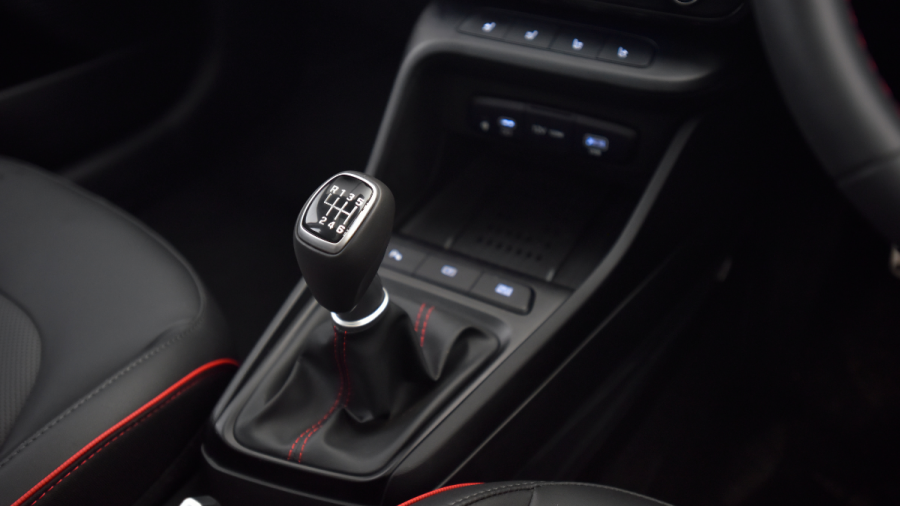
The 7-speed dual-clutch transmission is also a quick shifter, but more than the performance what surprised me is the efficiency. Hyundai claims this transmission offers the best efficiency in the entire Verna lineup. At 20.6kmpl overall that is very impressive, for an automatic.
DYNAMICS
The Verna wasn't known for its dynamics or its ride comfort, well I still can't tell you much about the former but the latter has improved, by leaps and bounds. I can't tell you much about the dynamics because we drove the Verna on the new Delhi Jaipur section of the Delhi Mumbai expressway. The corners on that section are wide, you can breeze through them at the limited 120kmph without batting an eyelid. Most of the sections are endless straights and left me with little scope to evaluate the handling characteristics.
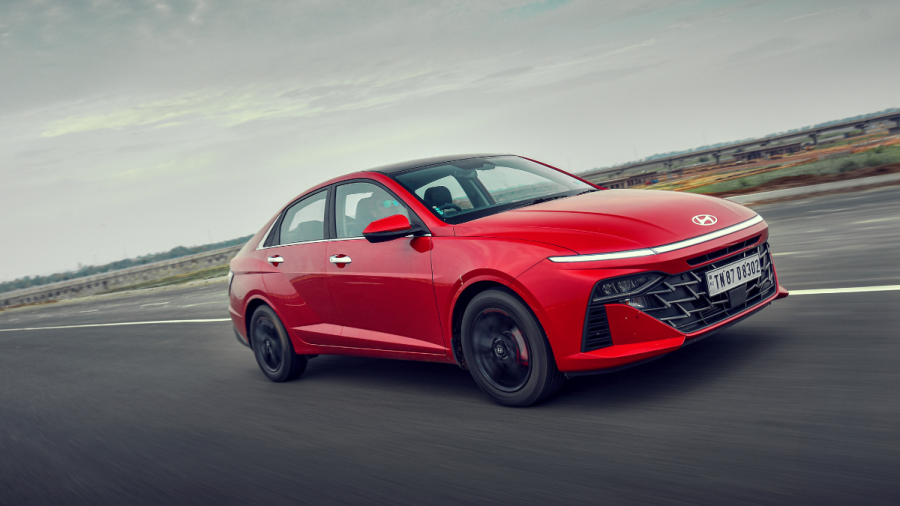
Ride quality too through the few sections of Gurugram that were lined with pockmarked streets was dealt with disdain by the Verna. A new suspension setup comprising of stiffer springs and dampers results in the most pliant ride I've ever experienced on the Verna. At high speeds too, this makes the feel stable and well-planted irrespective of which model you are driving.
The previous generation was a comfortable to drive but the soft suspension led to high front-end dive and you'd often end up scraping the front bumper across speed breakers or entry ramps. That is thankfully not the case any longer.
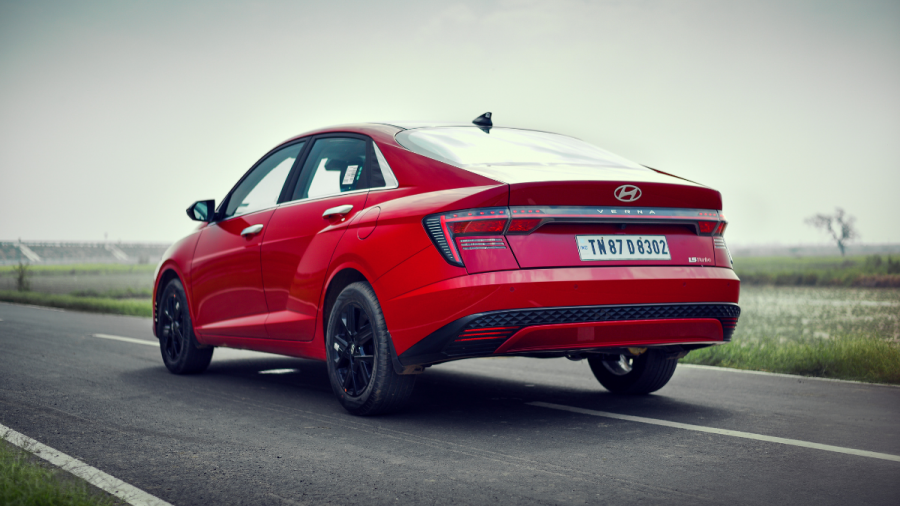
The steering has also been tweaked and despite the electronic assistance, it feels direct and hefty. At low speeds also the steering feels light, just not the single-finger light as in the previous generation sedan.
Stopping power uses a combination of disc and drum brakes though the top-line DCT turbo petrol is the only variant to get discs with single-pot callipers all around.
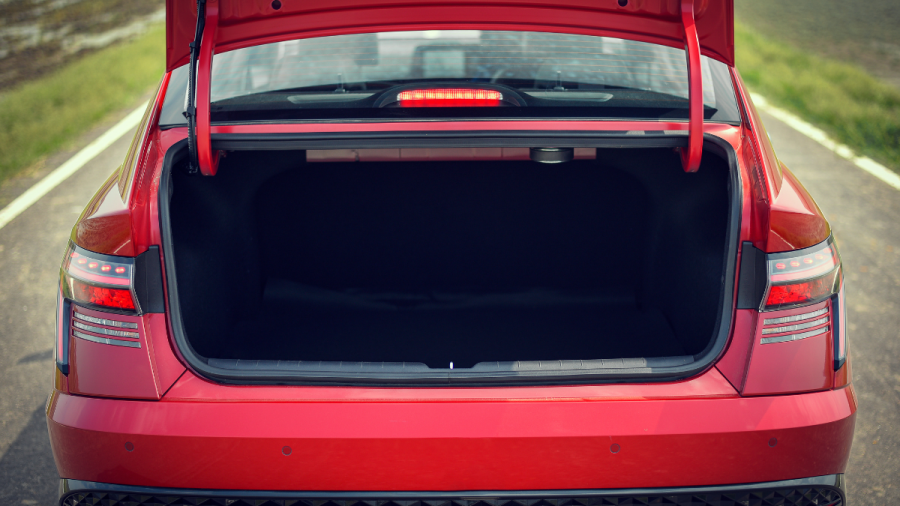
FEATURES
Connected tech, safety, advanced driver assistance systems (ADAS) and comfort play key roles in enhancing the features list. 6-airbags are standard across the entire range, as is ABS. ADAS adds in yet another level of active safety with collision warnings and avoidance systems, blind spot monitoring and collision avoidance, lane assists and smart cruise control. There is more to list out but one word of caution, given the conditions we drive in, switch off the emergency brake system.
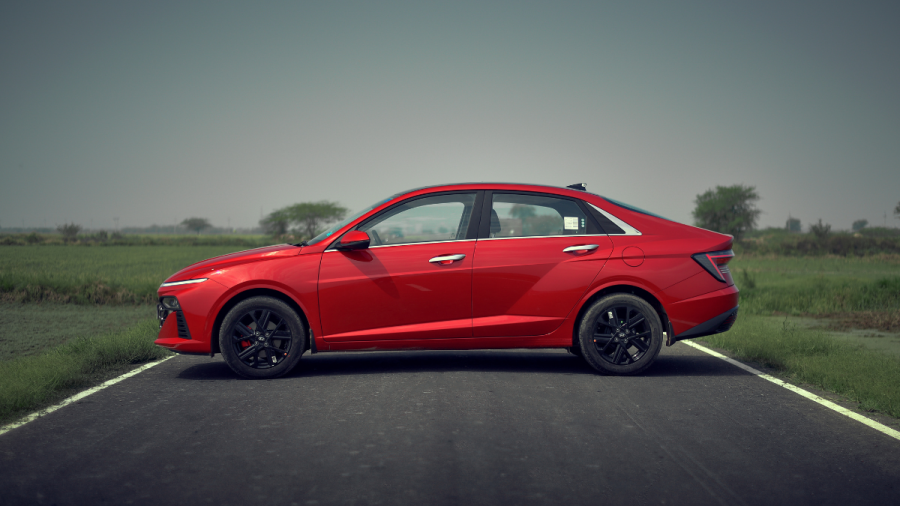
On the comfort front, the Verna gets both heated and ventilated seats, so no matter the season you drive in, your rear ends either hot or cool! There is also the connected suite of features and Bose delivering crisp clean acoustics to make every drive pleasant.
OVERALL
So is the Verna the game changer Hyundai hopes it can be? I don't think so. It is a very impressive sedan and worth every rupee at the current introductory pricing. Yet, it is a better sedan than everything available in the market. So if your heart still yearns for a sedan, then the Verna is easily the best choice. Perhaps if certain elements like dynamics are higher up your priority list when shopping for a , maybe the Volkswagen Virtus may be a better bet. A full comparison test between these sedans will reveal more, but for now, suffice to say that with the new Hyundai Verna, it's a win for you.
Starts Rs 9.31 Lakhs
1493cc
Automatic
115
250
-NA-
Starts Rs 11.22 Lakhs
999cc
Manual
115
178
18.12 Kmpl
